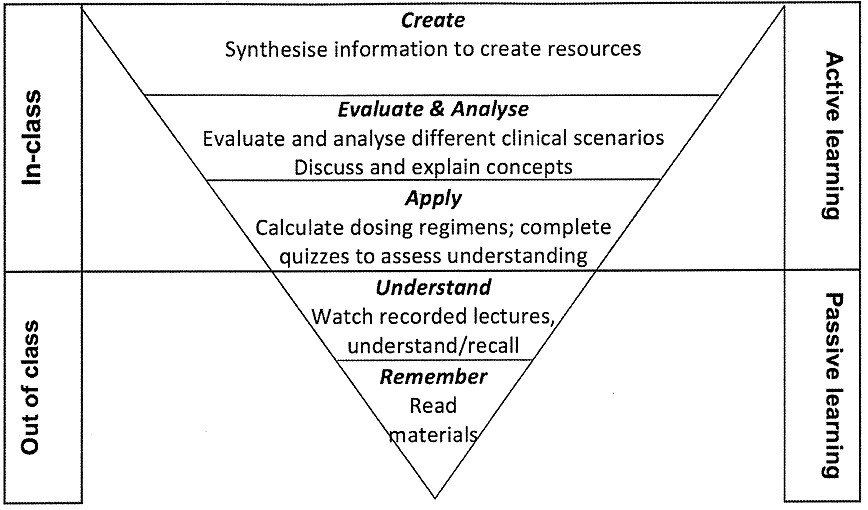Flipped learning
This methodology provides an avenue for more hands‐on and student‐driven learning during class time. The benefits of a flipped classroom include increased student motivation, differentiating instruction, self‐pacing lessons and mastery learning, increased collaboration and instant feedback for formative assessment.
Flipped learning is a pedagogical model in which the elements of face to face learning and homework of a study unit are reversed. Students participate in video lectures at home before the class meeting. In-class time is then used to discussion, implementation of the theoretical knowledge, excercises and/or projects. The video lectures are considered important. They are constructed by the teacher and realized online or they can be found in and selected from an online repository.
A lot of good information on flipped learning can be found in internet. Below an illustrated example of flipped learning (Schneider, Munro & Krishnan 2014).

Source: Jennifer Schneider, Irene Munro & Siva Krishnan. Flipping the Classroom for Pharmacokinetics. American Journal of Educational Research. 2014, 2(12), 1225-1229.
